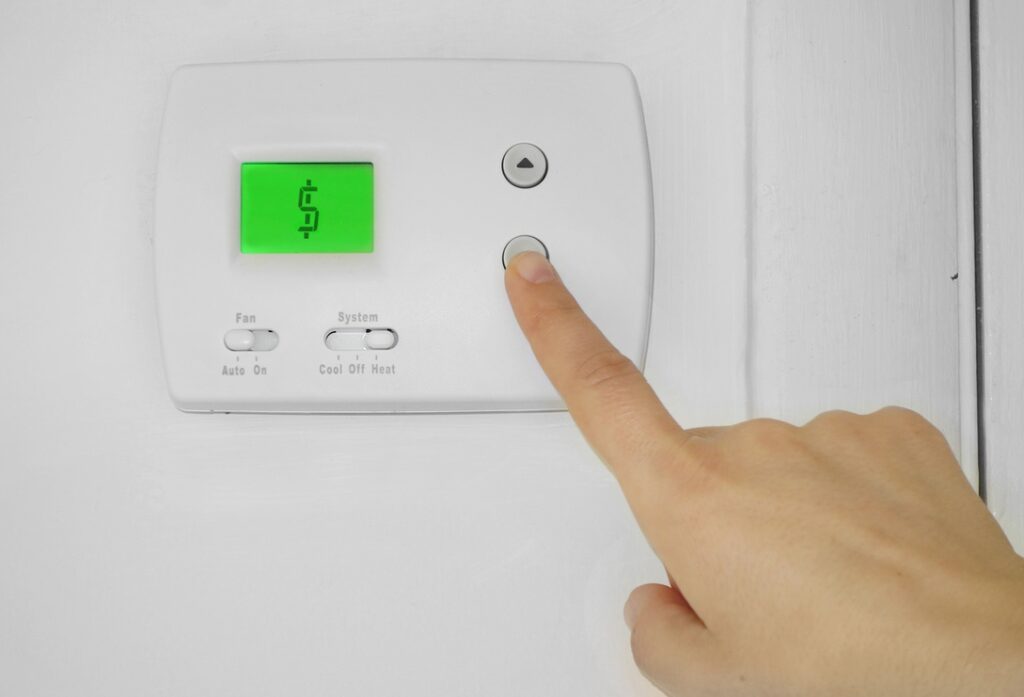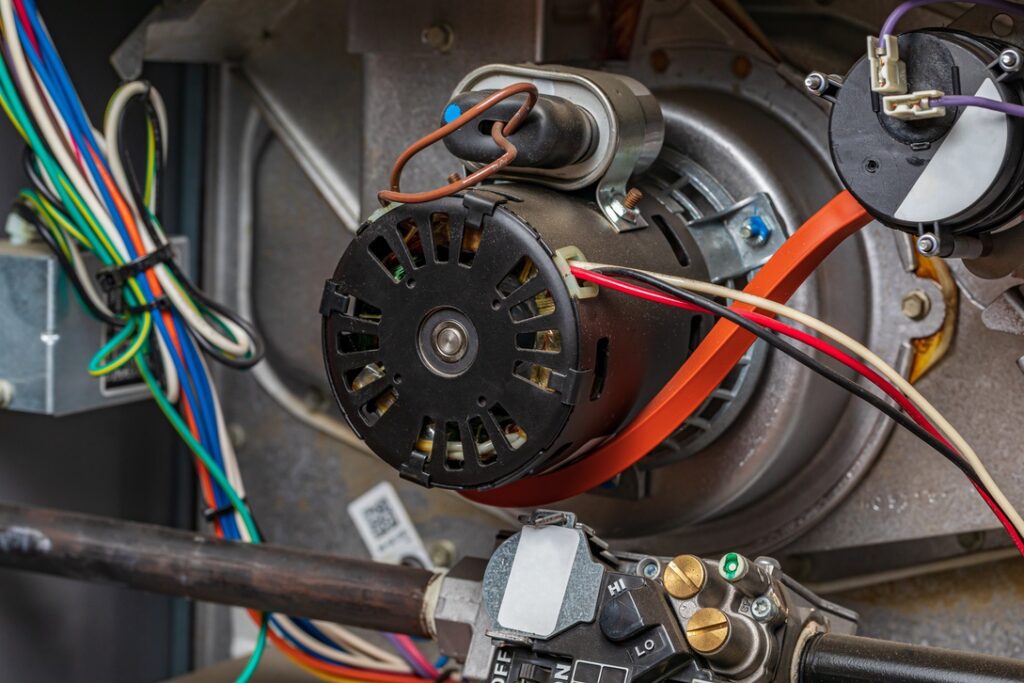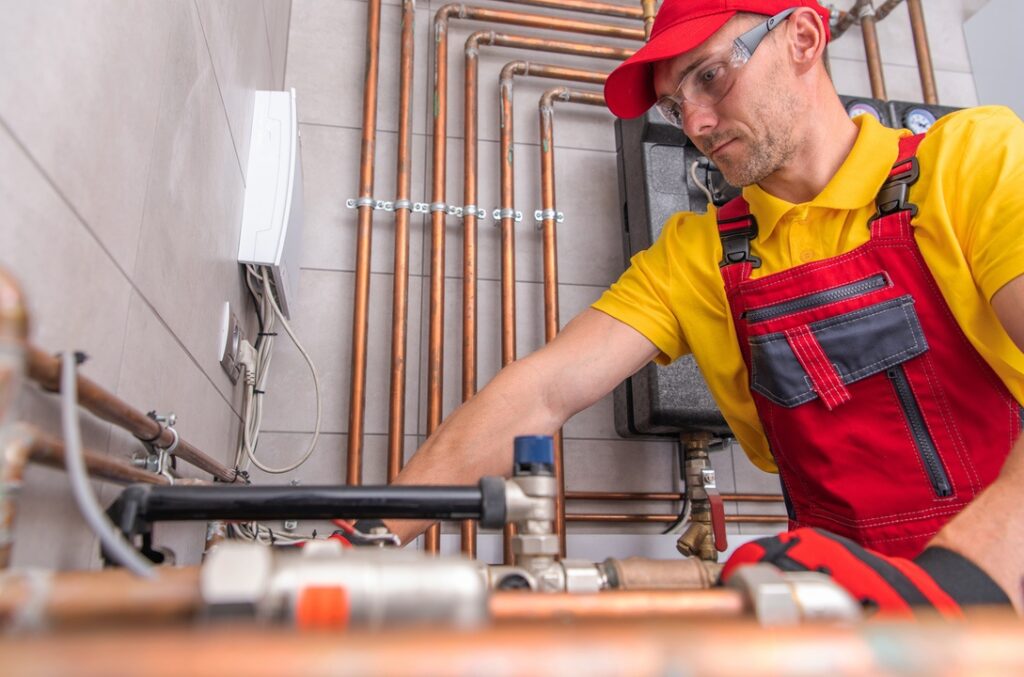If your current furnace is giving you trouble and has been installed for a decade or more, it’s probably time to upgrade. But what can you expect ...
If your current furnace is giving you trouble and has been installed for a decade or more, it’s probably time to upgrade. But what can you expect if you replace your current heating system with a high-efficiency natural gas model, and how does this option compare to your other choices?
Installing a new furnace with a higher efficiency rating has numerous benefits—including less noise, a lower risk of emergency breakdowns, and more affordable monthly heating bills. Learn more about these advantages from the home comfort team at Action Furnace below, plus the costs and timelines you should anticipate when buying one for your home.
See also: Electric vs Gas Furnace: Which Is Best For Albertans?

Lower Gas Bills
High-efficiency natural gas furnaces use less fuel to produce heat, which means you pay less for comfort in cold weather. The exact amount you’ll save depends on various factors, including:
- The efficiency of your old furnace
- The efficiency of the new furnace
- Current natural gas prices
- Your home’s insulation, square footage, ceiling height, and number of occupants
See also: 10 Tips To Lower Your Energy Bill
As a ballpark estimate, most homeowners can expect to save around 15-25% on their natural gas costs with a high-efficiency furnace. This means if you're currently spending $120 per month on heating, you could save $18-$30 each month.
Example:
Let's say your old furnace has an efficiency rating of 80% and you're spending $120 a month on natural gas. If you upgrade to a high-efficiency furnace with a 95% efficiency rating, you'll improve your efficiency by 18.75% (15% of 80 is 12, and 95-80=15, so 15/80 = 18.75%). This means your new heating bill would be about $97.50 (120 - 18.75% of 120), saving you $22.50 each month.

Less Noise
Part of the reason that high-efficiency furnaces use less energy is that the moving parts move much more smoothly. An added benefit of this is that newer heating systems make a lot less noise!
You’ve probably been distracted more than once by the loud humming your old furnace makes when it kicks on—but high-efficiency furnaces are like the secret agents of the HVAC world. They’re less-invasive, less noticeable, and the work they do in the background helps keep your home a comfortable and welcoming environment.
Superior Technology
High-efficiency natural gas furnaces achieve the benefits above by using modern technology not available in older models. Here are some of the key features you can look forward to when purchasing a new natural gas furnace from us:
Electronic Ignition
One of the best things about high-efficiency furnaces is their electronic ignition technology, which eliminates the need for a pilot light. The main advantage of this technology is that you save energy because the pilot light isn’t constantly burning.
Automatic Vent Dampers
In addition to electronic ignition technology, high-efficiency natural gas furnaces are also made with automatic vent dampers. These help create better thermal efficiency by shutting the flue pipe when the furnace is not in use—trapping and storing leftover heat so that it does not escape through your vents or chimney.
Automatic vent dampers give new furnaces a modest boost in energy efficiency, helping lower running costs. It’s not a huge difference, but it does contribute to your overall energy savings.
Multi-Stage Heating
The motors older furnaces used to move air through your ducts had two speeds: on or off. But the variable-speed motors that come in some new models are more like an automatic transmission on a car.
These motors adjust their speed to better control the desired power. The lower the speed, the less energy they use (and the higher their efficiency). This means newer furnaces don’t need to run at full blast whenever a little more heat is needed.
Dual Heat Exchangers
A heat exchanger is the part of your furnace that mixes heated air with the cooler air entering the system from your supply vents until it reaches the temperature your thermostat is set to.
This air is then recirculated through your ducts and into the rooms of your home via the return vents, creating a warm and cozy space.
Having a secondary heat exchanger allows the furnace to capture heat that would normally be lost by units with just one. This is a key part of how new gas furnaces are able to have substantially higher energy efficiency ratings than old ones.

Frequently Asked Questions About High-Efficiency Gas Furnaces
How Is Efficiency Measured for Natural Gas Furnaces?
The Annual Fuel Utilization Efficiency (AFUE) rating is the standard measure of heating efficiency used to evaluate furnaces. Essentially, AFUE measures how well a furnace converts fuel into heat—in other words, how much gas does a furnace use to heat a home?
Modern high-efficiency natural gas furnaces must have an AFUE rating of 90% or higher, although the most advanced units have ratings up to 98.5%! Conversely, many older furnaces have efficiency ratings of only 60%. That means 40% of the energy they use is not helping to heat your home, even though you’re still paying for it every month.
How Do High-Efficiency Gas Furnaces Compare to Oil or Electric Models?
If you’re weighing the decision to buy a new gas furnace against the choice of an oil or electric model, here are some factors to consider.
- Cost: Natural gas furnaces often have lower operational costs than oil or electric models due to the lower cost of natural gas.
- Maintenance: Gas furnaces tend to require less maintenance than oil furnaces but might need more regular check-ups than electric models.
- Environmental Impact: Natural gas furnaces emit fewer greenhouse gasses compared to oil furnaces. Electric furnaces can be cleaner, but only if the electricity is generated from renewable sources.
- Efficiency: High-efficiency gas furnaces can achieve efficiency ratings of up to 98%, compared to 80-90% for oil. While electric furnaces are technically 100% efficient, this rarely translates into utility savings since electricity is significantly more expensive than natural gas in Alberta.
How Much Does Installing a High-Efficiency Gas Furnace Cost?
The cost of installing a high-efficiency gas furnace can vary significantly based on the specific model and the complexity of the installation. However, you should expect to spend at least $6,000 - $10,000 for a new unit.
For a more precise quote on your new furnace, give our team a call! We’ll ask you a few quick questions about your home and heating needs, then recommend some options and tell you how much you can expect to spend on each one.
How Long Does Installing a High-Efficiency Gas Furnace Take?
On average, having our technicians install a high-efficiency gas furnace can take anywhere from 4-8 hours. This timeline may be longer if old equipment needs to be removed or if modifications to your home's infrastructure are needed. We’ll give you a precise idea of what to expect when you schedule your installation with us, and let you know if we find anything that could require more time.
How Often Does a New High-Efficiency Gas Furnace Need Maintenance?
High-efficiency gas furnaces should typically be serviced at least once a year. Here are a few tasks that our HVAC professionals perform during every furnace tune-up:
- Inspecting the Heat Exchanger: To check for cracks or corrosion that could lead to a carbon monoxide leak.
- Cleaning and Checking the Burners: This ensures they're working properly and providing efficient combustion.
- Checking the Fan Switch: To ensure it's cycling properly for optimal heat control.
- Lubricating Motors and Bearings: Reduces friction and helps equipment run smoothly.
- Checking the Safety Controls and Startup Cycle: Ensures the furnace is operating safely and properly.
- Changing the Air Filter: A clean air filter improves efficiency and air quality.
- Checking and Calibrating the Thermostat: Ensures accurate and efficient temperature control.
Find the Furnace That’s Best for Your Home
Finding the right new furnace can feel challenging because it’s an important investment. But getting advice from experienced professionals can make things a lot easier.
Buying a furnace that will be energy-efficient, quiet, and reliable in your home is always easier with the guidance of an HVAC professional. Get in touch with Action Furnace for information on the latest high-efficiency furnaces and find out how we can help lower your heating bills.



